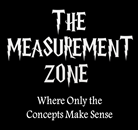Abstract
This entertaining and engaging lecture/activity takes students along on their flu-stricken instructor’s fever-induced nightmare visit to “The Measurement Zone.” The instructor needs to test his/her/their body temperature for fever, and then take a dose of fever-reducing medication based on body weight, but in “The Zone,” taking measures such as body...Details
- Subject Area(s):
- Research Methods
- Resource Type(s):
- Class Activity
- Class Level(s):
- Any Level
- Class Size(s):
- Medium
Usage Notes
The ability to develop good measures of concepts and evaluate the quality of existing ones is a key research methods skill for students. This entertaining and engaging lecture/activity takes students along on their flu-stricken instructor’s fever-induced nightmare to a surreal “Measurement Zone” where taking simple measurements is turned on its head. In...Learning Goals and Assessments
Learning Goal(s):
- Students will be able to explain the importance of using high-quality measures in research.
- Students will be able to describe face validity, precision, reliability and accuracy as they are used in research.
- Students will be able to identify invalid, imprecise, and unreliable measures of specific concepts.
Goal Assessment(s):
- In a “one-minute paper” classroom assessment technique, short answer, or essay test item, ask students this question:
In your own words, explain why measurement quality is important in research.
- In an ungraded quiz or “one-minute paper” classroom assessment technique, short answer or essay test item, ask students this question:
Describe each of the following as it applies in research: face validity, precision, reliability and accuracy.
- Using a student response system, show of hands, or test item, ask the following:
Which of these is an invalid, an imprecise, and an unreliable measure of . Each is used once.
When using resources from TRAILS, please include a clear and legible citation.


